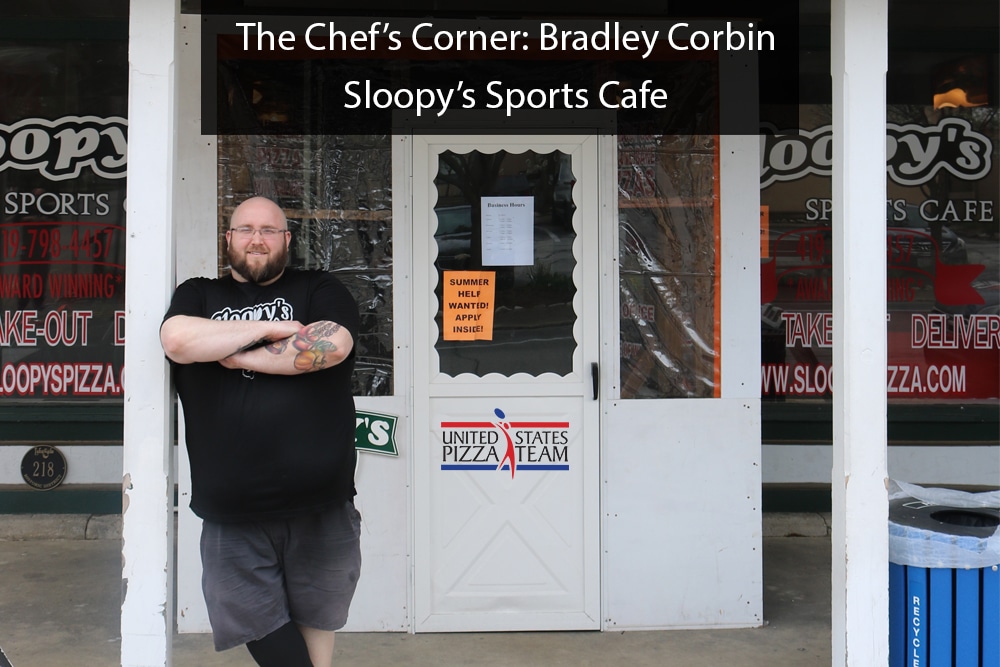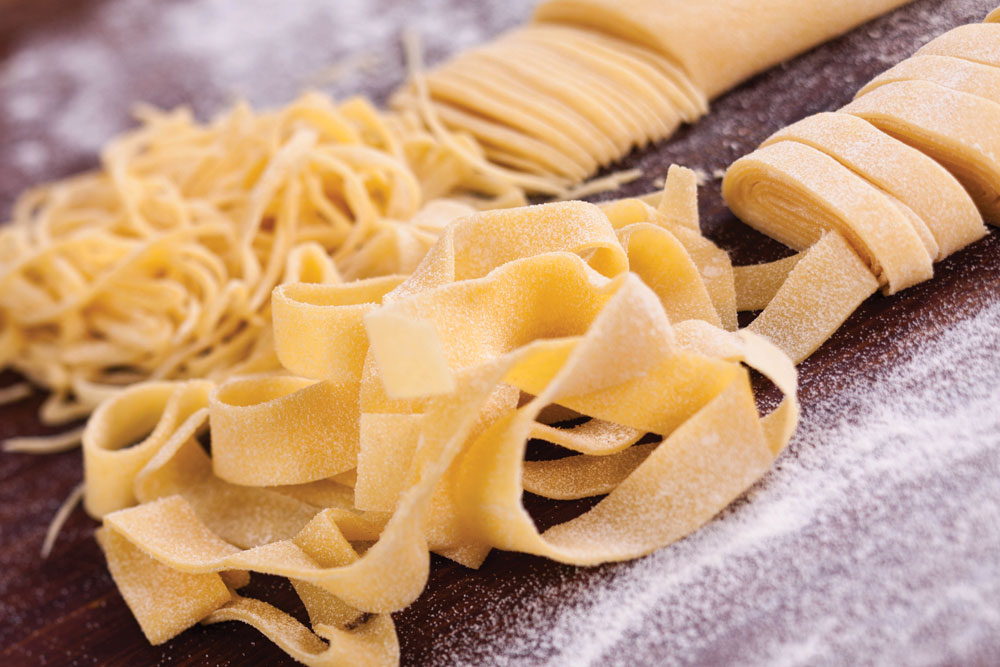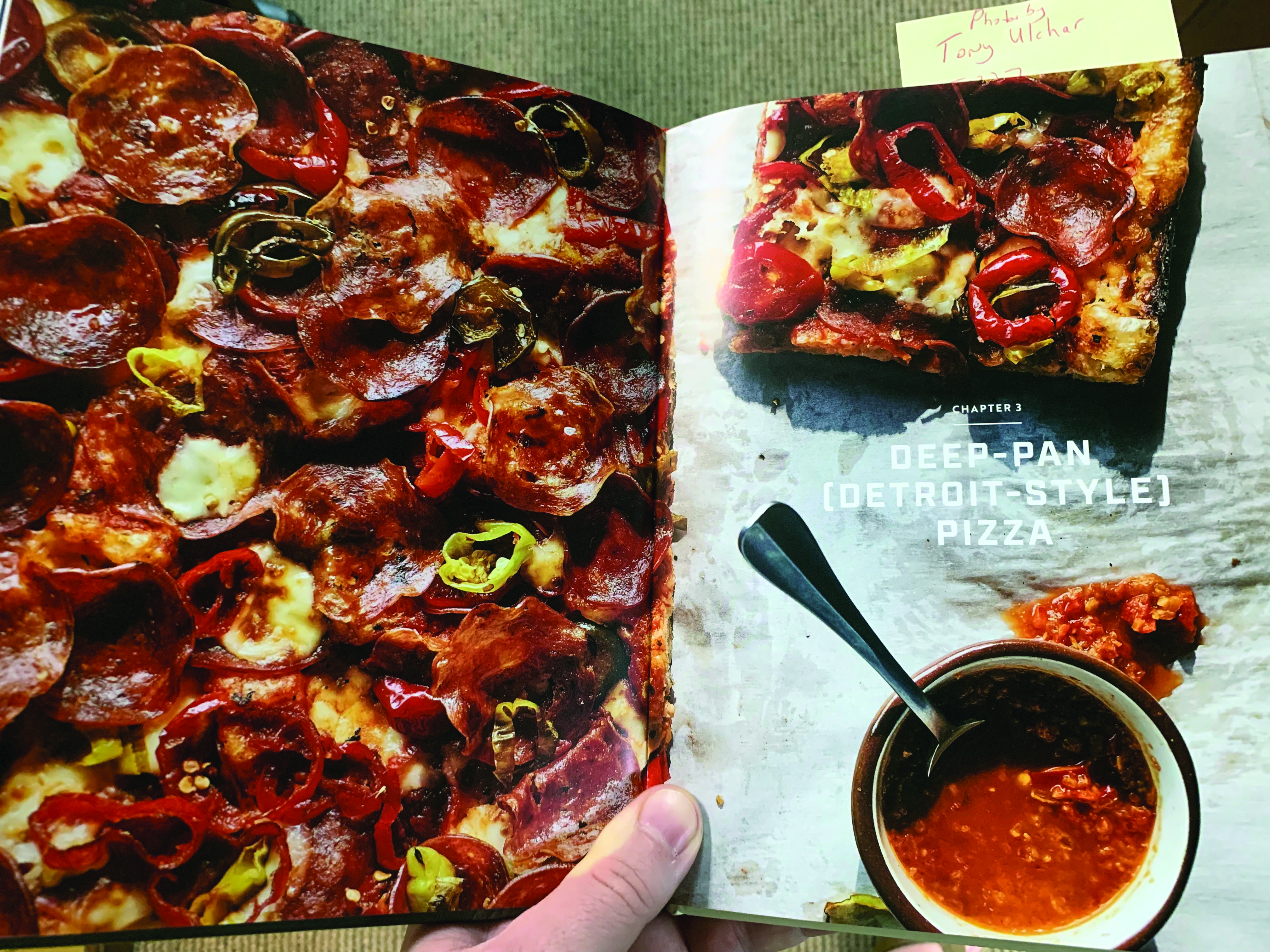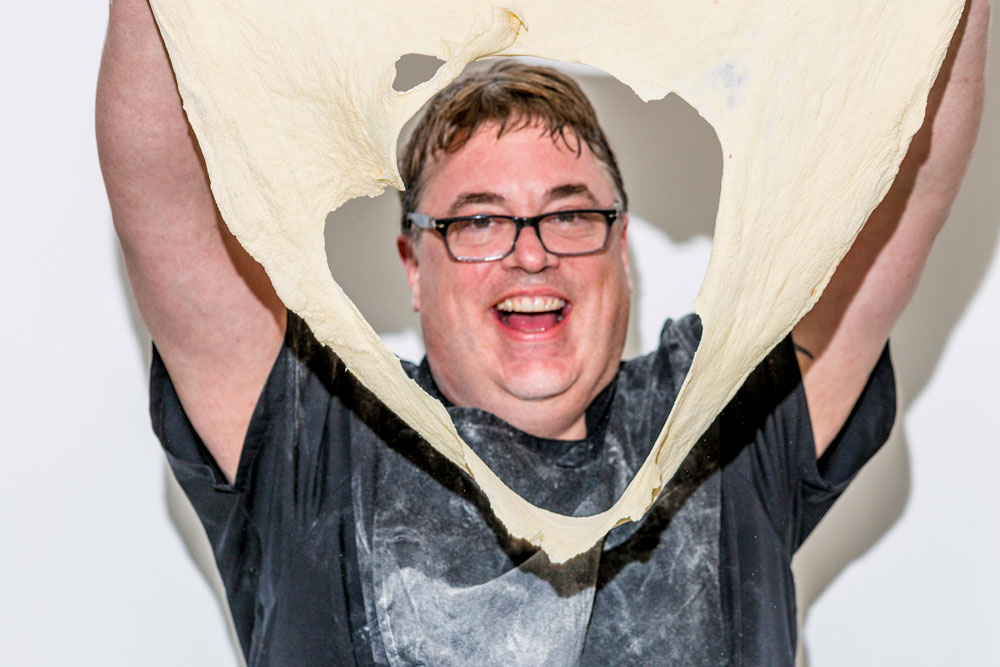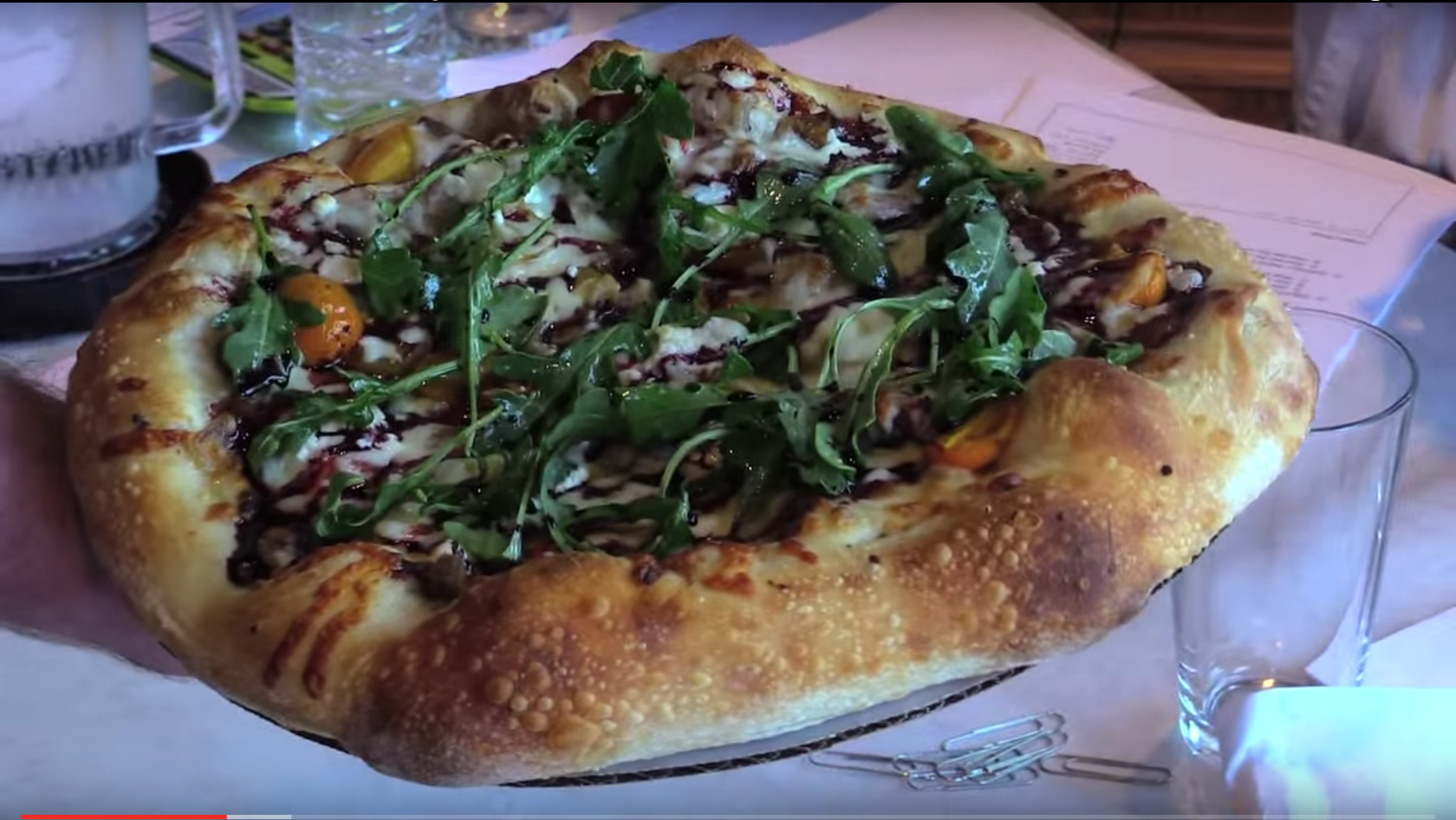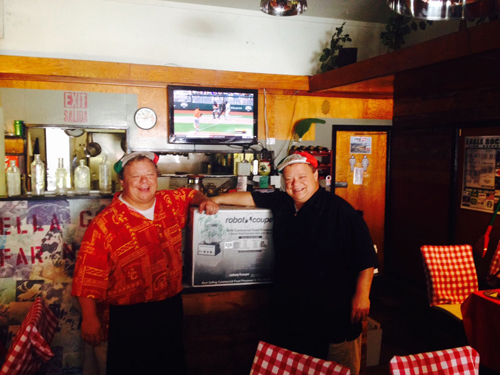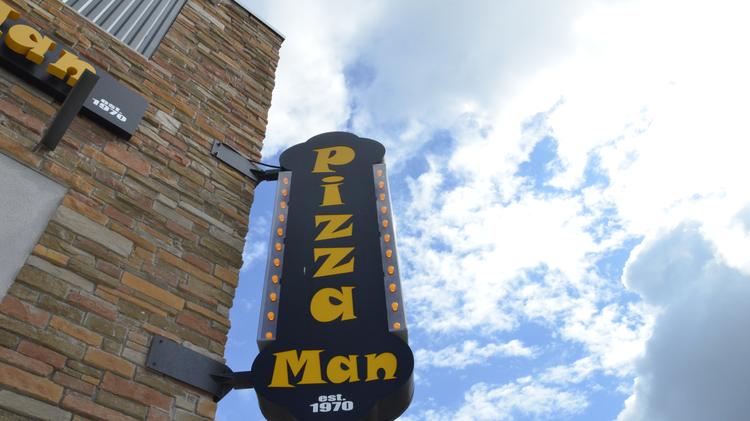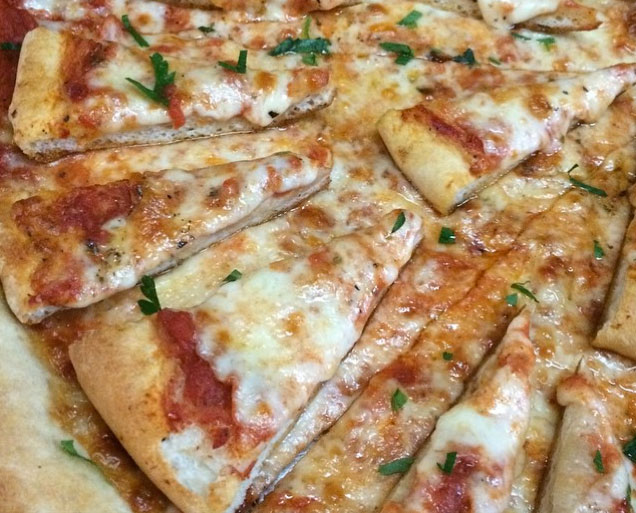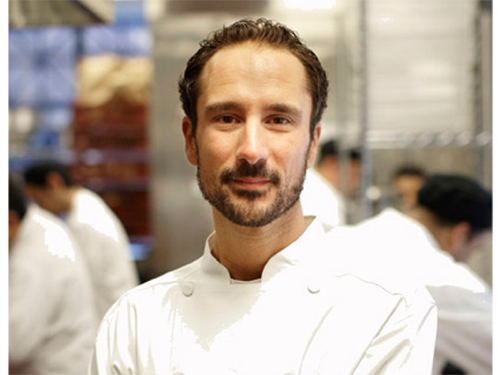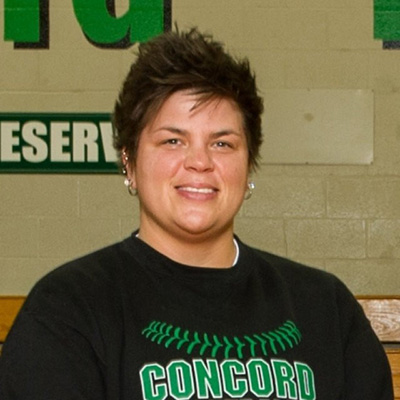(To get more information about consulting for Detroit style from Detroit Style Pizza Co. and business distribution, please visit www.detroitstylepizza.com. For information about the restaurant visit www.detroitstyelpizza.co. For consumer pizza distribution visit www.Goldbelly.com/detroit-pizza-company and check out DSPCTV on YouTube.)
Brian: Hello and welcome to the Chef’s Corner, I’m your host Brian Hernandez, and today I am speaking with Detroit’s favorite son. No, it’s not RoboCop, I’m talking about Shawn Randazzo of Detroit Style Pizza Co. How are you doing Shawn?
Shawn: I’m doing good Brian, thanks.
Brian: Thanks for taking time from your prep schedule to talk with us. In the interest of brevity, let’s jump right in. Question one, as always, what is your first pizza memory?
Shawn: Well, I have a couple. One, probably around the age of 11, me and my buddies always rode our bikes up to Domino’s. They would put us in the back room and give us 5 bundles of boxes, and we’d sit there for an hour or two folding boxes. Our reward would be a small pizza each at the end of the day. At the time it was awesome. As an 11-year-old, I thought nothing was cooler than getting a pizza for folding boxes. The other one is from when I was a little older, but when I was 14, I wanted some video games and expensive clothes. My Mom told me I had to buy them on my own. So, I went to the local party store and they had a deli, some deck ovens and they did pizza slices. So, I got a job there, and I remember the owner’s sons and I getting into dough fights in the back room. I didn’t realize until many years later that that dough actually came from Cloverleaf. After finding that out I thought it was pretty cool, since it happened that dough, in the future, had a lot to do with my career.
Brian: That kind of jumps into the next question then, which is how did you get started in the business? I know folding boxes as an 11-year-old is a giant leap from where you are today, but when and how did you get earnestly started in the pizza business?
Shawn: I would say it was in the summer of 1995 when I was about 18. I had just quit working for my uncle. He had a tiling company and literally I was carrying 100 buckets of mud up the stairs every day. That got kind of old, so I was looking for a job that summer, and I walked into a pizzeria. It was Cloverleaf Pizzeria in St. Clair Shores. I spoke with the owner there and he pretty much asked me when I can start. That’s how I got my foot in the pizzeria business. I started as a delivery driver, and I was there for about a year, maybe a little less, and the owner was getting very overworked. He had moved me up to assistant manager but was still working 7 days a week with 4 kids at home. I told him that I could handle this, let me at least do Sundays. So, he ended up getting Sundays off, and I worked my way up through management in a very short time.
Brian: You mentioned you got started at Cloverleaf. Is this the same Cloverleaf that began as Buddy’s, the originators of Detroit style pizza?
Shawn: Yes, so, just a brief history, Gus Guerra started with Buddy’s in ’46. He created this style using a blued steel pan from an auto parts plant. Pressed out some thick but light and airy dough, put the cheese and toppings on then the sauce on top and Detroit Style was born. He then left Buddy’s and started Cloverleaf in the early 50’s and that has been around ever since. And to the question of how I got started in the business. In ’97, the owner was talking about selling that Cloverleaf. I really didn’t think I was a candidate. I was about 19 or 20, very young, and didn’t have any money stashed away. But I mentioned it my mother who was working as a waitress. About two months later she called one day on her break and asked if I had ever thought about going into business together and asked if the owner was still selling. Long story short, we ended up getting the place with my mother remortgaging her house and doing all these different things to make it happen and that’s how I really got into the business.
Brian: Well again that jumps into the next question, which was, was it always going to be Detroit style for you, or did you have plans for any other style of pizza? Sounds like you jumped in on that ground floor.
Shawn: Yeah, pretty much. I mean, every store around here does Detroit style pizza, the mom and pops, the party stores, but for me it was always gonna be Detroit. To me it’s not a style. It’s just pizza.
The Detroit Twist is a basic, simple pizza that has a very refreshing and light after taste. It’s topped with tomatoes and onions. The post-bake toppings are arugula tossed in a housemade lemon oil dressing with optional lemon zest on top for color and flavor. It’s one of my favorites. I created this with some inspiration from a client we worked with in Toronto, Chris Getchell of Descendant Pizza. I created this for a competition. I entered this in the vegetarian category at the Motor City Pizza Fest in 2015 winning first place. I’ve had a lot of success with this recipe.
Brian: I love arugula on pizza. This one will be delicious. Anyone interested in making this pie themselves can find this recipe video at https://www.pmq.com/detroittwist.
Detroit Style has been around for a while. Why do you think it is “all of a sudden” having a big surge in popularity?
Shawn: Well, a whole bunch of reasons. I’ll give you my thoughts on this. In no way are trying to take credit for this, but I’ll put it like this. In 2009, when I went to Columbus and brought my Detroit style pizza and won first place, I was the only one there out of 60 or 70 competitors, 3 and a half hours outside of Detroit, that had a square pizza with caramelized cheese and sauce on top. It fueled the passion in me to really put this style of pizza on the map. Before that, I literally thought this style of pizza was everywhere, but I didn’t realize it was such a secret to our region. So, I said, “We got this amazing culinary masterpiece that came from this region that nobody knows about”, and I thought I could also put some positive light on the city as well. Then in 2012, I win World Champion Pizza Maker of the Year, which I think created a lot of exposure for this style. Tony Gemignani even mentioned my win in his book as being one of the first times a lot of people outside the Detroit area had experienced that style of pizza. I think that really opened up the gate for a lot of people to be exposed to it. So, we created the training program and have been fortunate enough to train people from all across the world. Thailand, Toronto and all over the United States. I felt like I was planting these seeds and building an army of authentic Detroit style pizza makers who are bringing it to all these new regions and markets. So now, current day, we have Chris Getchell of Descendant Pizza in Toronto, Jeff Smokevitch of Blue Pan Pizza in Colorado, the Hunt Brothers of Via 313 in Austin,. Even Tony Gemignani has it on his menus, and it’s starting to really blow up now in Chicago and Ohio. All these different markets are doing very well with this pizza, so now there are a ton of eyes on it. I truly believe that in the next 2 to 3 years, we will see this hit critical mass. Now it’s a proven style. I feel comfortable to say that within those few years, the markets that don’t have it now, will definitely have it within driving distance in the future.
Brian: Well, thanks for the award-winning recipe and all the insight into the emergence of this unique style of pie. As an ambassador for Detroit style, how would you describe it to someone that has never had or even heard of it?
Shawn: Basically, it’s the same thing we teach people that take our training course. To be authentic you have to boil it down to 5 things. The 5 characteristics which determine if your pie is considered ‘authentic’ or not are:
- The dough. It’s a very hydrated dough, so it’s very light on the inside, crispy on the outside. If you’re used to baker’s percentages, it’s usually around 70% hydrated. Because it is so hydrated, a lot of the complex ingredients are already broken down, so it is easier to digest. So, the dough is really important to the authenticity of this style.
- The shape. You can’t do a round pizza and call it Detroit style. Not even if you follow all of the other rules. It has to be square, or rectangular to be specific.
- It is a deep dish. But not be confused with what we all have been taught deep dish is. Because it’s not super heavy, it’s super light, and it doesn’t sit your stomach like a brick.
- The cheese. Traditionally Wisconsin brick cheese is used, perhaps even in a blend. More importantly it’s the way the cheese is applied edge to edge so that it caramelizes all around the crust. That is a lot of people’s favorite part of this style of pizza.
- Sauce on top. We’ve had people yell out, “That’s an upside-down pizza!”. So that helped coin that phrase. Also coining the phrase red-top pizza. Some people even put two racing stripes down the sides to go along with the theme of ‘Motor City’.
But those are the 5 items that we teach and explain to people that are the characteristics of an authentic Detroit style pizza. You know, the pans are super important too. The seasoned blue steel pans, to get that texture and bake of the pie. Deck ovens are traditionally used. And just another fact to throw out there, there is no ‘authentic’ Detroit style pizza place out there that uses par-baked crust. But through our consulting at Detroit Style Pizza Co., we have been tasked with coming up with new recipes and systems for people to make Detroit style pizzas using conveyors, but they will traditionally use a par-baked crust.
Brian: At some point you had mentioned something about mail order to me. What were you talking about? Did you mean mailing coupons to people?
Shawn: No, pizzas. Our mail order consists of pizzas, but we also distribute Detroit style pizza dough mixes, gluten-free mixes, pans, lids, utensils and things of that nature. That has really been my focus for the last couple years, building our distribution and mail order. But for our pizzas specifically, we are partnered with a site called Goldbelly.com. We do anywhere from 100-600 pizzas a week through that. That’s my mom’s full-time job, but then, again, we also sell pans and other items and ship them out to people wanting good Detroit style tools.
Brian: Also, you mentioned that you had a food truck?
Shawn: Yes, we just rolled that out this year and have already gotten on board with some large local events. We’d been involved with these local festivals for a long-time, but one year after getting back from one, I finally broke down. It was just too hard to have to move everything every time to accommodate these events. I think it was the time I was having to move our mixer by myself and it fell on top of me and I was this close to having the handle pierce my ribs. I think that was the line in the sand. A food truck has always been on the list, and we were lucky enough to get our food truck built to spec and rolled out last spring. We finally got our food truck manager in place and now I can get back to working on the distribution side of the business.
Brian: So, this truck has a mixer and deck ovens and pretty self-contained, so you can do everything on sight?
Shawn: Exactly.
Brian: That’s great. Especially having a mixer on site. So, obviously you mentioned you compete. Do you think it’s important for pizzerias to try it out?
Shawn: It’s not only beneficial for the company, but I think on a personal level it’s very beneficial because you get experience a lot of things. You get inspired, you see what other people are doing and you meet a whole lot of people. One thing that I am really grateful for in this industry is people like yourself, and all these great people going way back to people like Scott Anthony and Big Dave Ostrander. It’s the relationships, and the willingness to help others and the feeling that we are all in this together. It’s a great thing. So, I think competing, of course if you win, it’s great exposure for your restaurant, but even more on the personal level, by filling your passion and making these ties, that’s the real benefit in the long run.
Brian: Well, this has been a discussion from the Motor City. Home of Robocop, Eminem and my good friend and friend to the industry, Shawn Randazzo, in my opinion and many others, the ambassador for Detroit style pizza. Shawn, if people want to find out more about getting consultation from you or your distribution arm, how can they find you?
Shawn: To get in touch with me you can email me at Shawn@detroitstylepizza.com, or you can visit our pizzeria website at www.DetroitStylePizza.co. You can find information on consulting and our business distribution site at www.detroitstylepizza.com and our consumer distribution site at www.goldbelly.com/detroit-pizza-company. One thing I’m really proud of is the launch of DSPCTV on YouTube. It’s a Detroit style Pizza channel featuring informative interviews and segments for anything Detroit style! We have a whole bunch of great videos, recipes and content ready to go. The whole goal is to provide a one stop shop for you that is Detroit style programming.
Brian: That’s great I will get my subscription right away! Once again Shawn, thank you for your time. I’ve been waiting a long time to get you here in the Chef’s Corner for sure. You gave us a lot of great information and made it so simple. I want everyone to check out Detroit Style Pizza Co. if you are in the Detroit area of St. Clair Shores, Michigan. Anything you want to tell people about pizza in general as we sign off?
Shawn: I’ll tell you this, pizza is about creating memories and opportunities. The memory part actually hit me hard years ago when I found out about how emotional people are with memories related to food and the memories it rekindles. Can I tell one more story before we go?
Brian: Of course.
Shawn: OK, many years ago, maybe ten or so, I get a call, and it was from this lady saying that her father was in the hospital dying of cancer. One item on his bucket list was to get a good authentic Detroit style pizza. They used to live in Detroit but now lived in Texas with no access to it. She asked if there was any way we could get some of our pizza. At the time, we did send pizzas with customers that used to winter in Florida, but we didn’t really do mail order. But I said, “Of course!” So, I got the information and sent the package out the next day. I get a call from the lady the next day saying she was sorry, but the package had been torn up. I guess they lived in a rural area and animals had gotten to all the goods. I said, “No worries, there’s another one on the way!” She called back after that and wanted to tell me how much it meant to their family and that her father wanted to talk to me on the phone, was this possible? I said, “Absolutely!” So, we set the call up for the next day. So, the next day I get on the phone with this guy and he just went on and on about how when he was younger, he and his friends would go out and get pizza. He was just reliving all these memories with me. He sounded like a teenager, very passionate! I was thinking to myself, how could this man be dying of cancer. He sounded so full of life. It was all because of the pizza memories. The memories pizza brought up of his youth and good times. He ended up passing about a month later, and after that whole experience, I get a really long letter from the family, that brought me tears, basically saying that this gift of pizza brought the family together again one more time before he passed. Sharing, talking and making memories. That…that’s the power of pizza.
Brian: Wow, I admit. I am all teared up here. That’s a great testament to the power of pizza in people’s lives. Pizza creates emotions, it creates memories and has the power to bring people together. That’s a beautiful story. Shawn, thank you again for everything. We wish you well and look forward to more great news from the Motor City.
Shawn: Thanks Brian for having me.


